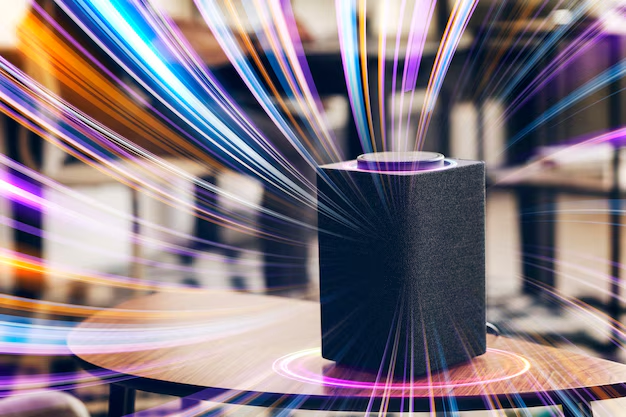When it comes to high-end speakers, few names resonate with audiophiles more than Revel and Magico. Both brands are known for delivering exceptional sound quality and design. In this article, we’ll compare two standout models: the Revel F226Be and the Magico S1. We’ll examine their design, sound quality, and value, helping you decide which speaker best suits your needs.
Introduction
Choosing the right speakers for your home audio system is essential for an immersive listening experience. Both the Revel F226Be and Magico S1 are premium choices, but they have different features and characteristics that appeal to different types of listeners. In this comparison, we will break down key aspects of each model to give you a clearer picture of what they offer.
Design and Build Quality
Revel F226Be
The Revel F226Be is part of Revel’s PerformaBe series, featuring a sleek, modern design. The speaker is available in multiple finishes, including gloss black, gloss white, and walnut, allowing it to fit seamlessly into any room décor. Its design is elegant, with rounded edges and a compact yet sturdy build that exudes quality.
The “Be” in F226Be stands for beryllium, the material used in its tweeter. Beryllium is known for its lightweight and stiffness, providing excellent sound accuracy and minimal distortion. The speaker’s three-way design includes a 1-inch beryllium tweeter, a 5.25-inch midrange driver, and two 6.5-inch woofers, all enclosed in a solid, braced cabinet for minimal vibrations.
Magico S1
Magico has a reputation for pushing the boundaries of speaker design, and the S1 is no exception. The S1 is part of Magico’s S-Series, known for its minimalist design and high-tech materials. Unlike the Revel F226Be, the S1 uses aluminum enclosures, giving it a futuristic look and a high level of rigidity that reduces unwanted resonance.
The Magico S1 features a two-way design, with a 1-inch beryllium dome tweeter and a 7-inch graphene-infused woofer. This unique material selection offers high strength and low mass, which helps deliver clean, detailed sound. The sleek aluminum body comes in various finishes, providing an industrial yet luxurious feel.
Sound Quality
Revel F226Be
The Revel F226Be is often praised for its neutral and accurate sound reproduction. It delivers clear highs, a detailed midrange, and tight bass, making it ideal for listeners who prefer a balanced sound profile. Thanks to its beryllium tweeter, the F226Be excels at producing crisp, clean highs without harshness, even at high volumes.
One of the standout features of the F226Be is its wide soundstage, which provides an immersive listening experience. Whether you’re listening to classical music or high-energy rock, the F226Be delivers excellent clarity and separation between instruments.
Magico S1
The Magico S1 is known for its precision and transparency. It delivers a highly detailed sound, with exceptional clarity in both the highs and midrange. The S1’s use of a graphene-infused woofer gives it a distinct advantage in producing tight, punchy bass that doesn’t overpower the rest of the sound spectrum.
While the S1 is a two-way speaker, it doesn’t lack in sound quality. Its ability to reproduce the finest details in music makes it a favorite among audiophiles who value accuracy and realism. The speaker’s sound signature is clean and precise, ideal for critical listening sessions.
Performance in Different Room Sizes
Revel F226Be
The Revel F226Be performs well in medium to large-sized rooms. Its wide soundstage and ability to fill a room with sound make it a great choice for home theater setups or larger living spaces. The speaker’s three-way design ensures that all frequency ranges are well represented, even in bigger rooms.
However, due to its size, the F226Be might be a bit much for smaller rooms. In compact spaces, the bass response might feel overpowering, and the speaker may not have enough room to “breathe.”
Magico S1
The Magico S1 is better suited for smaller to medium-sized rooms. Its more compact design and two-way configuration make it an ideal option for those who want high-end sound in a smaller space. The S1’s precise sound reproduction shines in intimate listening environments, where its transparency and detail can be fully appreciated.
For larger rooms, the S1 may not have the same impact as the Revel F226Be, particularly in the lower bass frequencies. However, if paired with a subwoofer, the S1 can still deliver an impressive sound performance in bigger spaces.
Price and Value
Revel F226Be
With a price tag typically ranging between $7,500 to $8,000 per pair, the Revel F226Be is an investment. However, for what it offers in terms of build quality, sound performance, and overall design, many audiophiles consider it worth the price. Its combination of advanced materials and excellent engineering makes it a strong contender in the high-end speaker market.
Magico S1
The Magico S1 comes in at a higher price point, often around $16,000 per pair. While this may seem steep, Magico’s use of cutting-edge materials like graphene and aluminum justifies the cost for many audiophiles who seek unparalleled sound precision. The S1 is aimed at those who prioritize transparency and detail over other sonic characteristics.
Which One Should You Choose?
Revel F226Be
- Pros: Neutral sound profile, excellent clarity, wide soundstage, relatively more affordable
- Cons: May overpower smaller rooms, requires space to perform its best
Magico S1
- Pros: Precise and transparent sound, premium materials, compact design ideal for smaller spaces
- Cons: Higher price, less impactful in larger rooms without additional support
Conclusion
Both the Revel F226Be and Magico S1 offer exceptional sound quality, but they cater to different listening preferences and room sizes. If you prefer a balanced sound with a wide soundstage, the Revel F226Be is an excellent choice. However, if you prioritize precision and transparency in a compact design, the Magico S1 is a top-tier option, albeit at a higher price. Ultimately, the decision comes down to your personal preferences, room size, and budget.










